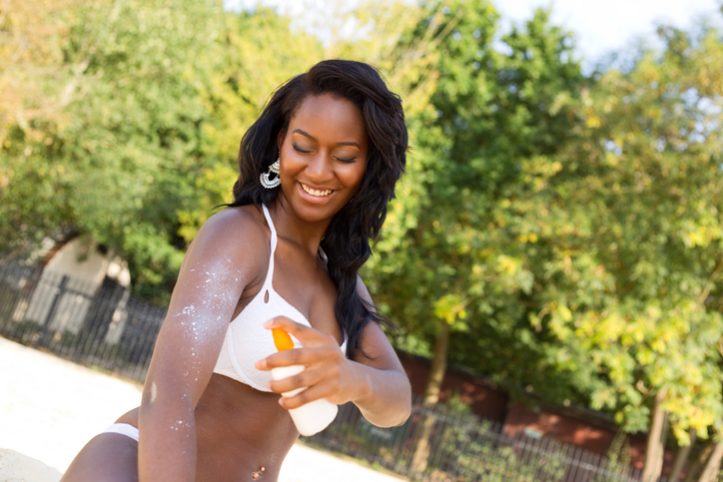It is a common misconception that darker skin is less likely to develop skin cancer.

Picture: iStock
‘I’ve got darker skin, so I can’t get skin cancer.” This is a common misconception and a potentially harmful one.
In fact, skin cancer can happen to anyone, irrespective of skin colour. And it’s happening more and more.
The World Health Organisation (WHO) estimates that a 10% decrease in ozone levels will create an additional 300,000 nonmelanoma and 4,500 melanoma skin cancer cases worldwide.
And it can take just 15 minutes for permanent sun damage to skin to occur. So, Cansa (the Cancer Association of SA) is calling for people to be more sun smart.
Chief medical officer at Sanlam Dr Marion Morkel notes that while breast cancer in women and prostate cancer in men remain the most common cancer-linked claims for Sanlam, melanoma is in the top five.
Skin cancer awareness is represented by a black ribbon. Picture: iStock
Cansa reports SA has the second-highest incidence rate of skin cancer in the world, after Australia. There are approximately 20,000 reported cases in SA per annum.
While those with fairer skin and albinism need to take extra precautions, it’s important to note that everyone can be affected.
Morkel adds the cost of managing skin cancer is huge in SA. “While interesting advances in medical research suggest improved outcomes even with advanced skin cancer, these treatments remain very expensive.
“Dread disease cover adds another layer of protection to ensure you have financial support to assist with extended medical needs and adjustments to your lifestyle, should you be diagnosed with skin cancer.
“This provides good assurance that you have mitigated risk should the unexpected happen.”
Different types of sunscreen. Picture: iStock
Over the summer holidays, especially, many sun-loving people will be flocking to the beach.
Dr Dagmar Whitaker, specialist dermatologist, president of the Melanoma Society of SA and vice-president of the World Melanoma Society, says it is a common misconception that darker skin is less likely to develop skin cancer.
“Black skin has got natural sun protection equivalent to an SPF 15. However, as dermatologists, we recommend sunscreen of SPF 50. Given the ozone hole and increased UV concentration, natural protection is not enough.”
Whitaker adds that 20 or so years ago, skin cancer in darker skin was practically unheard of. “Now, we see it more and more as people partake in outdoor activities amidst an increased UV concentration,” says Whitaker.
“The other reason is that people are living longer and, therefore, the lifelong risk of skin cancer increases.”
Picture: iStock
There are three types of skin cancer. “The melanoma and so-called nonmelanoma skin cancers, which occur as basal cell carcinoma (BCC), and squamous cell carcinoma (SCC).
“Melanoma cancer can spread all over the body like any other serious cancer. It usually starts from a changing mole or any new black spot that arrives from nowhere.
“That’s why you should inspect your skin once a month. BCC and SCC look like red/pink/ scaly or bumpy skin changes – or sores that do not heal. They don’t spread to other parts of the body, but destroy the skin and can grow very deep and cause ulcers. They are usually slow growing.”
Whitaker advises that everyone learns the “change is a red flag” principle – any changes to the skin that do not go away should be checked out by a professional, preferably a dermatologist.
The best way to prevent skin cancer is to be vigilant during childhood.
Picture: iStock
“Eighty percent of one’s lifetime damage happens in the first 20 years of life. Sun protective clothing comes first, plus sunscreen. Wear it daily, on all uncovered areas.
“In our country, irrespective of skin type, you need SPF 50. As you get older (ages 30 and above), you need to do monthly skin inspections. Look out for new spots or moles that have changed.”
Morkel says it is also important to manage the financial risks of cancer proactively.
“Dread disease cover can help alleviate the financial burden of a cancer curve ball. Our unique cancer-only benefit covers all stages of malignant melanoma from stages I to IV: basal cell skin carcinoma or squamous cell skin carcinoma (stage one or two), having undergone a skin graft or skin flap, and all nonmelanoma skin cancer.”
For more news your way, download The Citizen’s app for iOS and Android.
Download our app